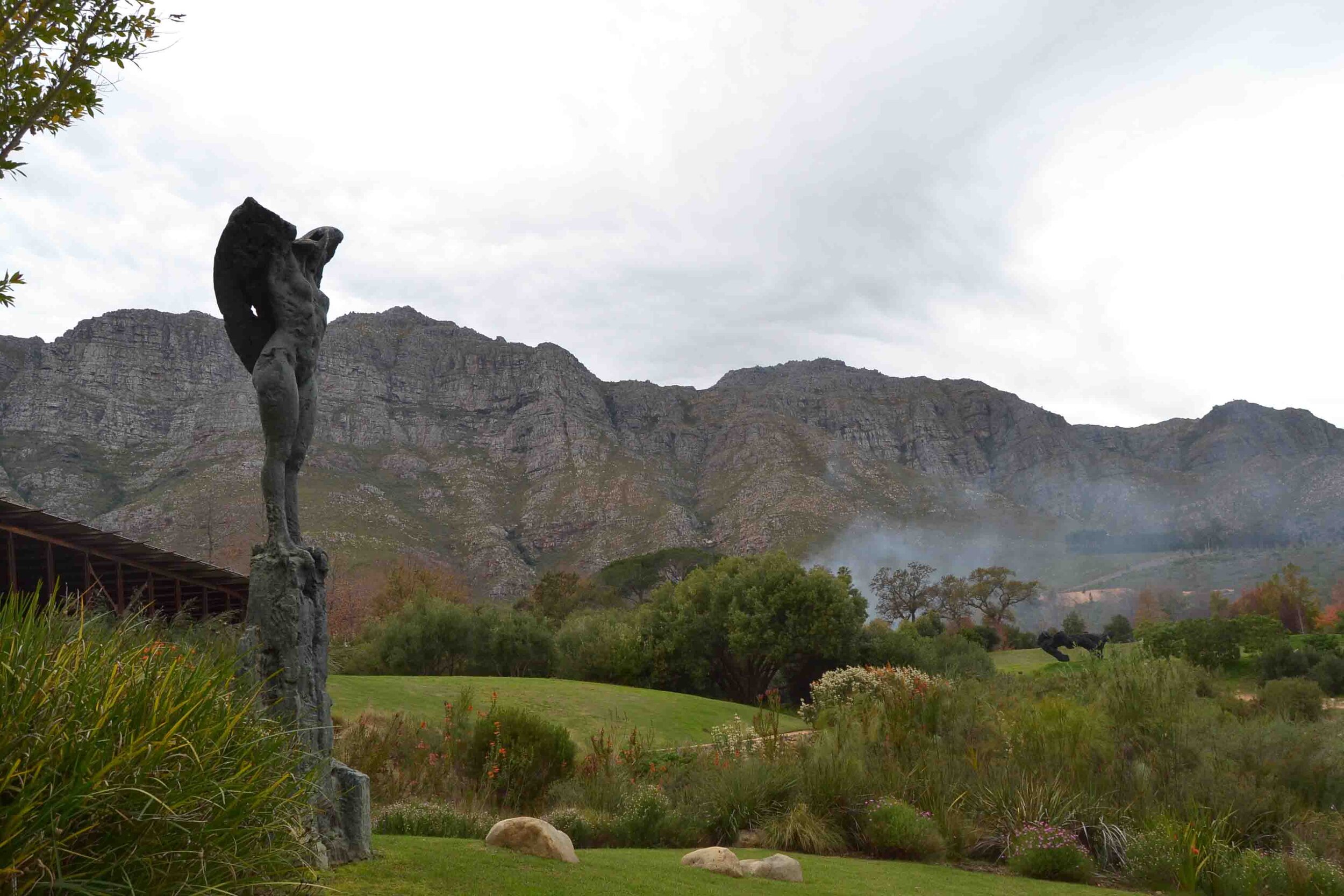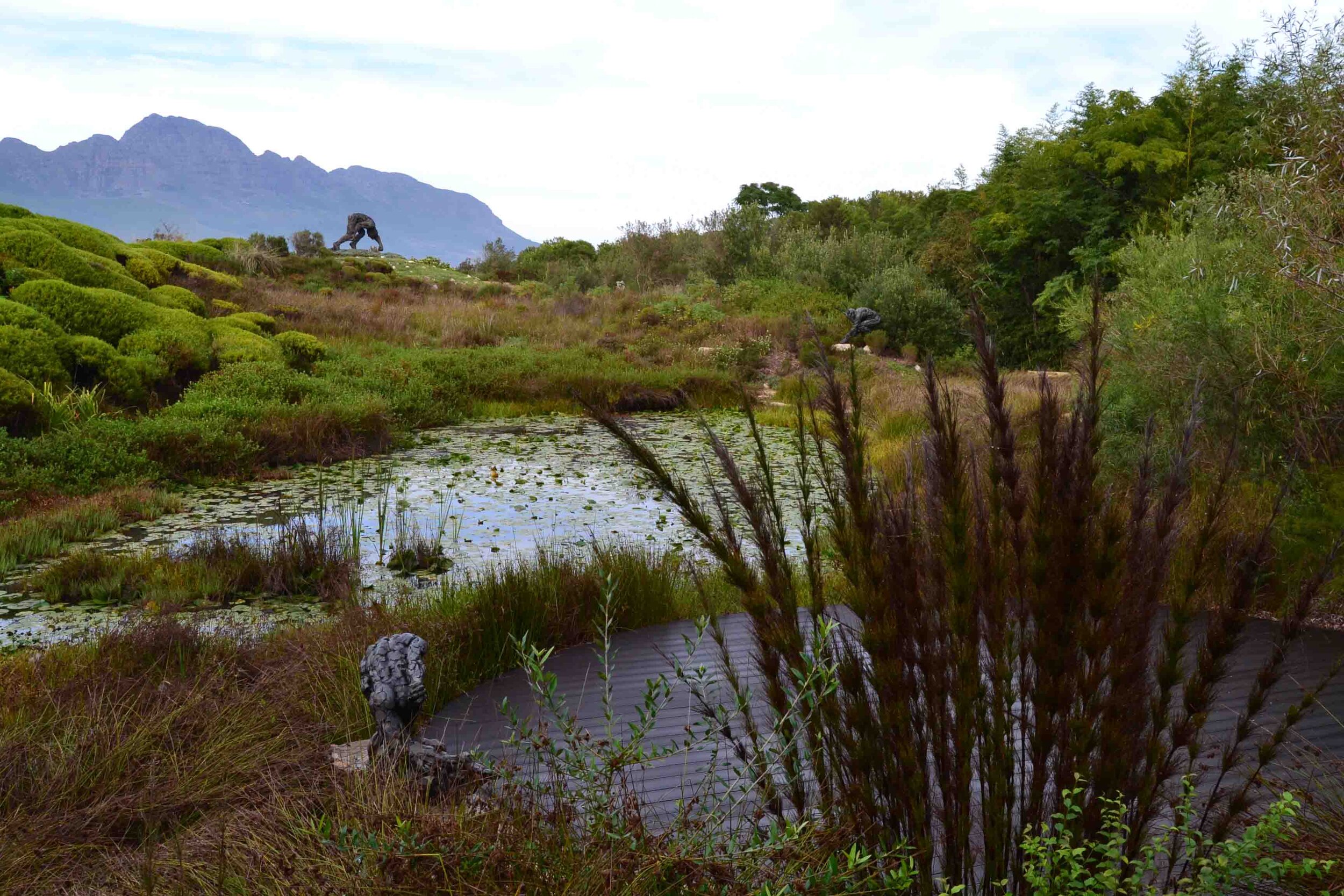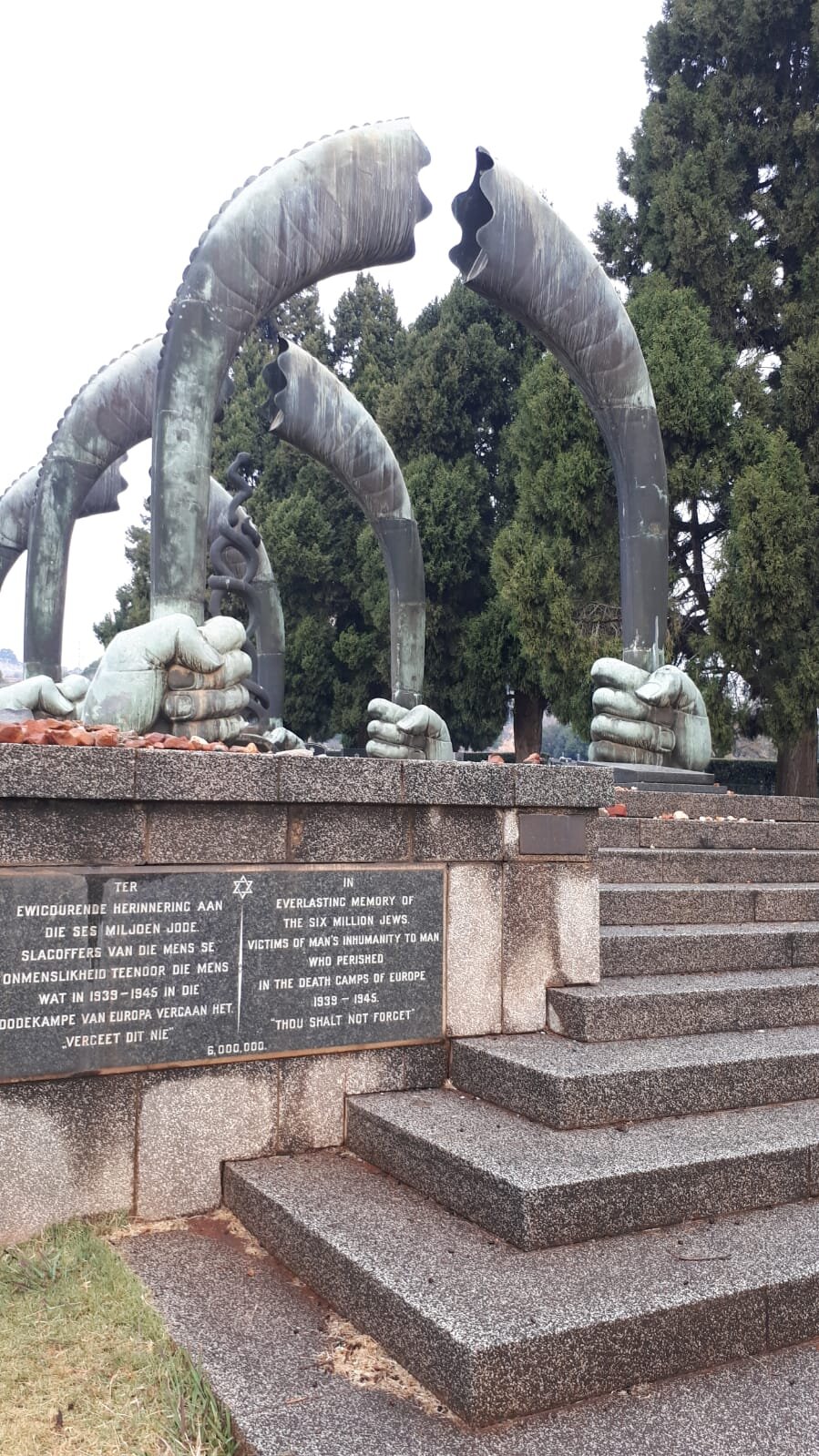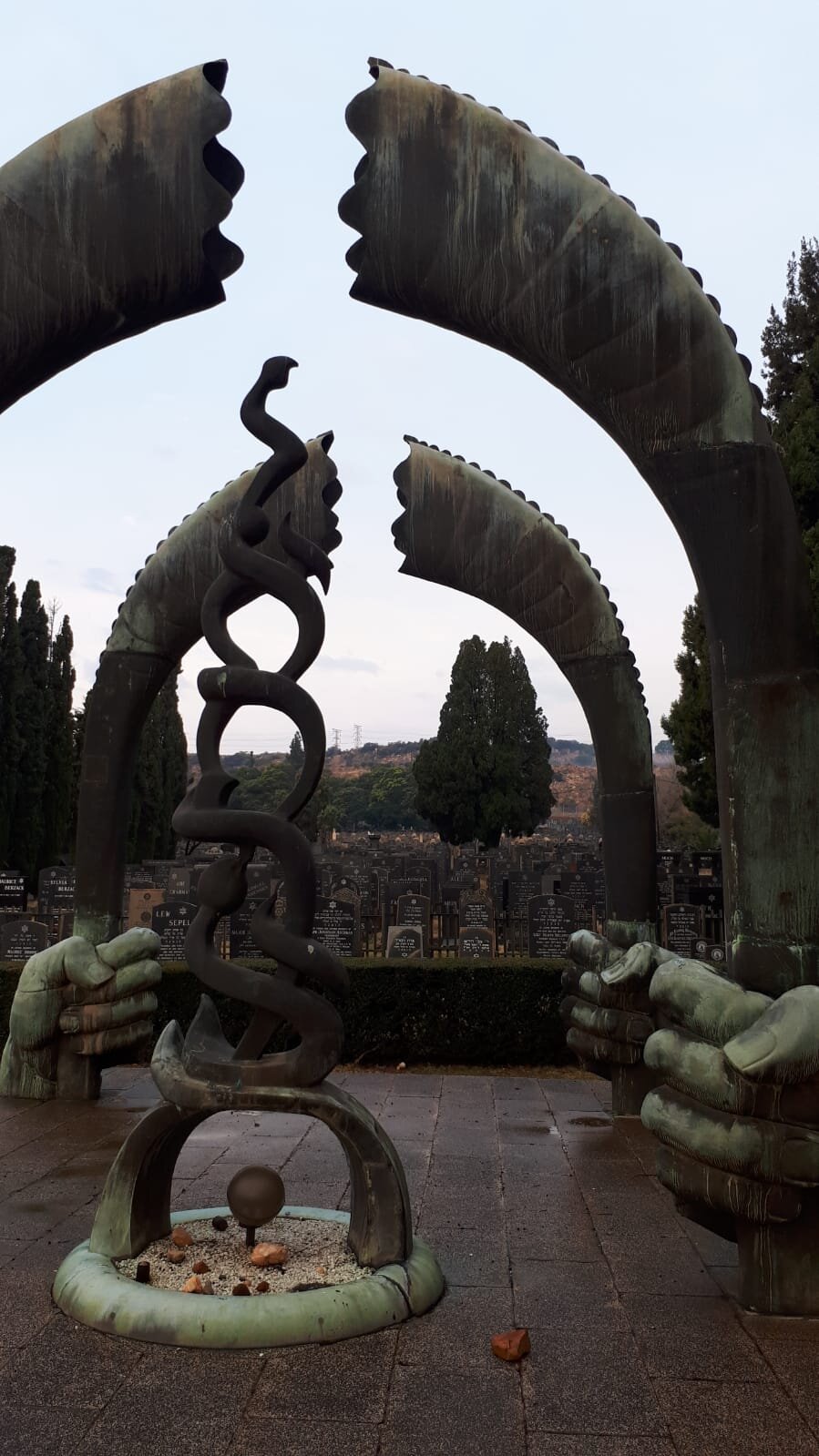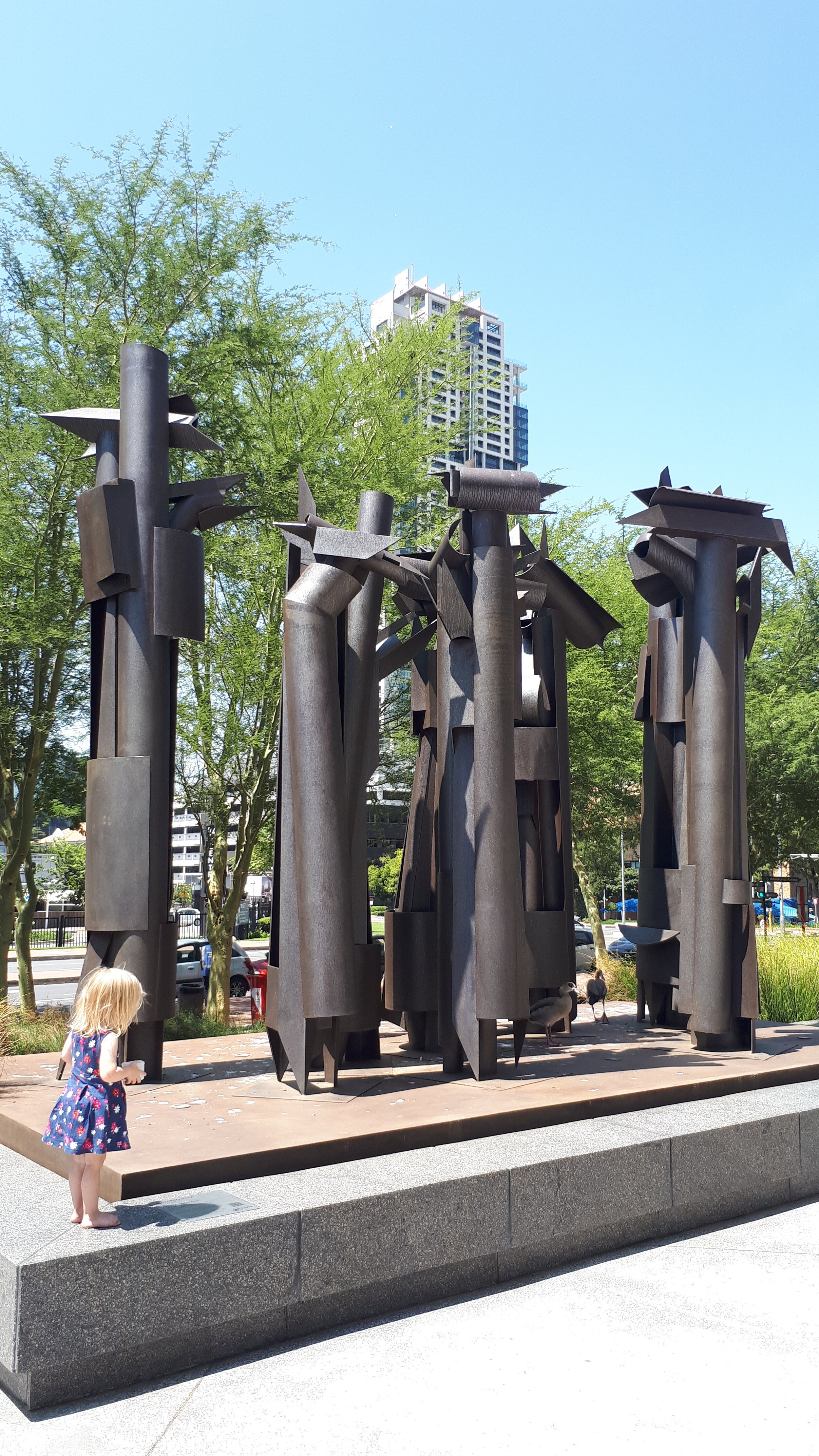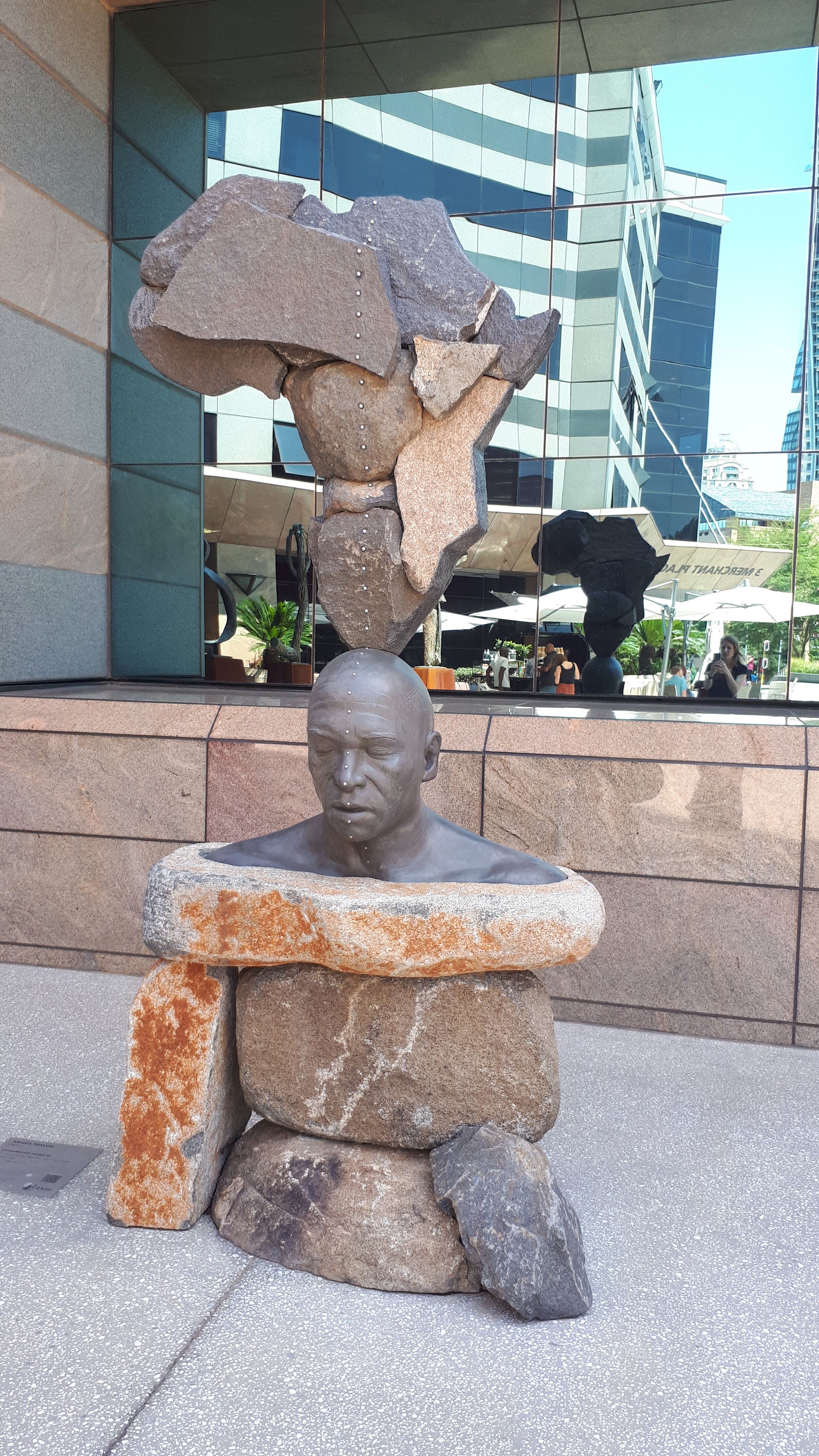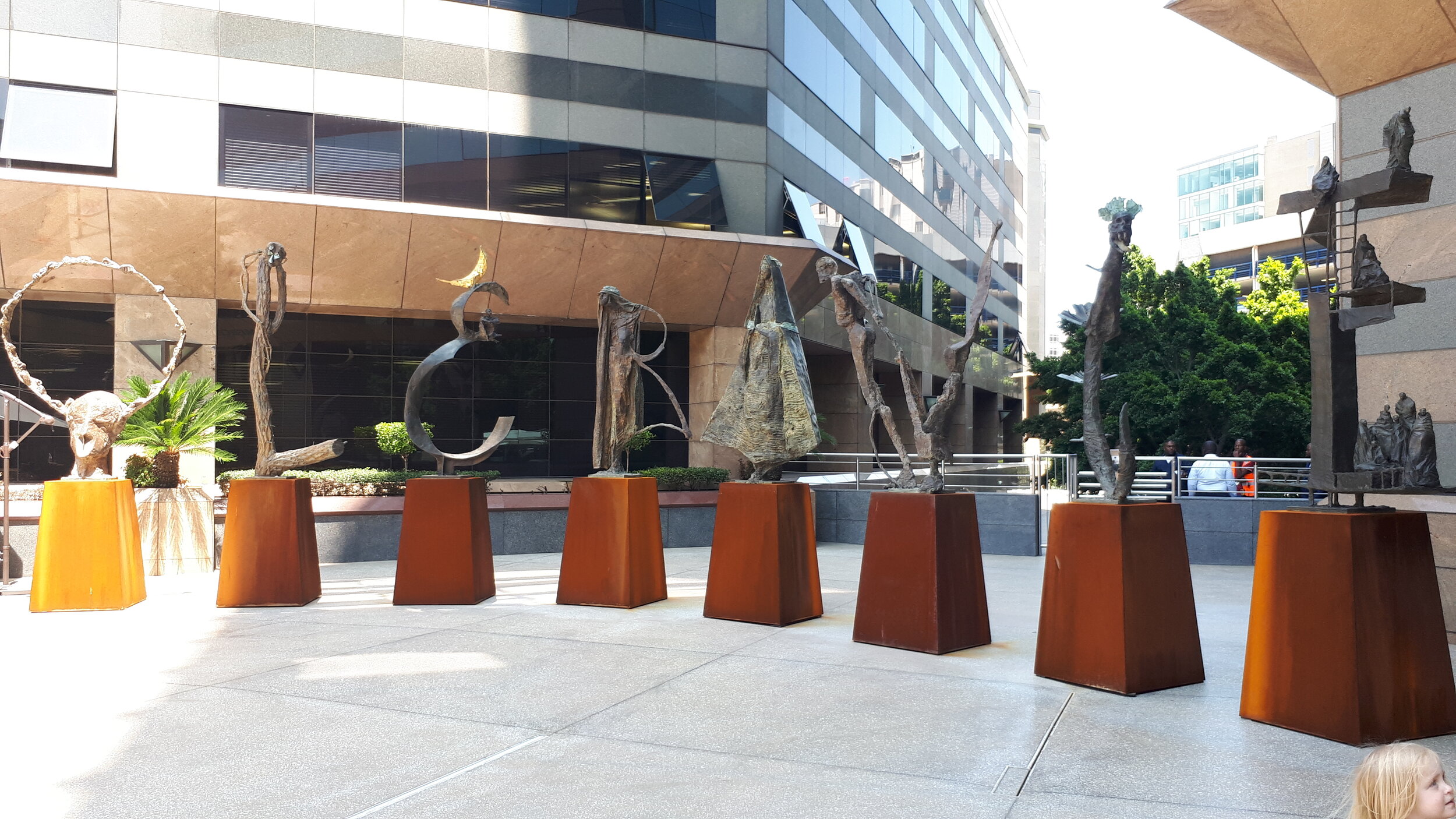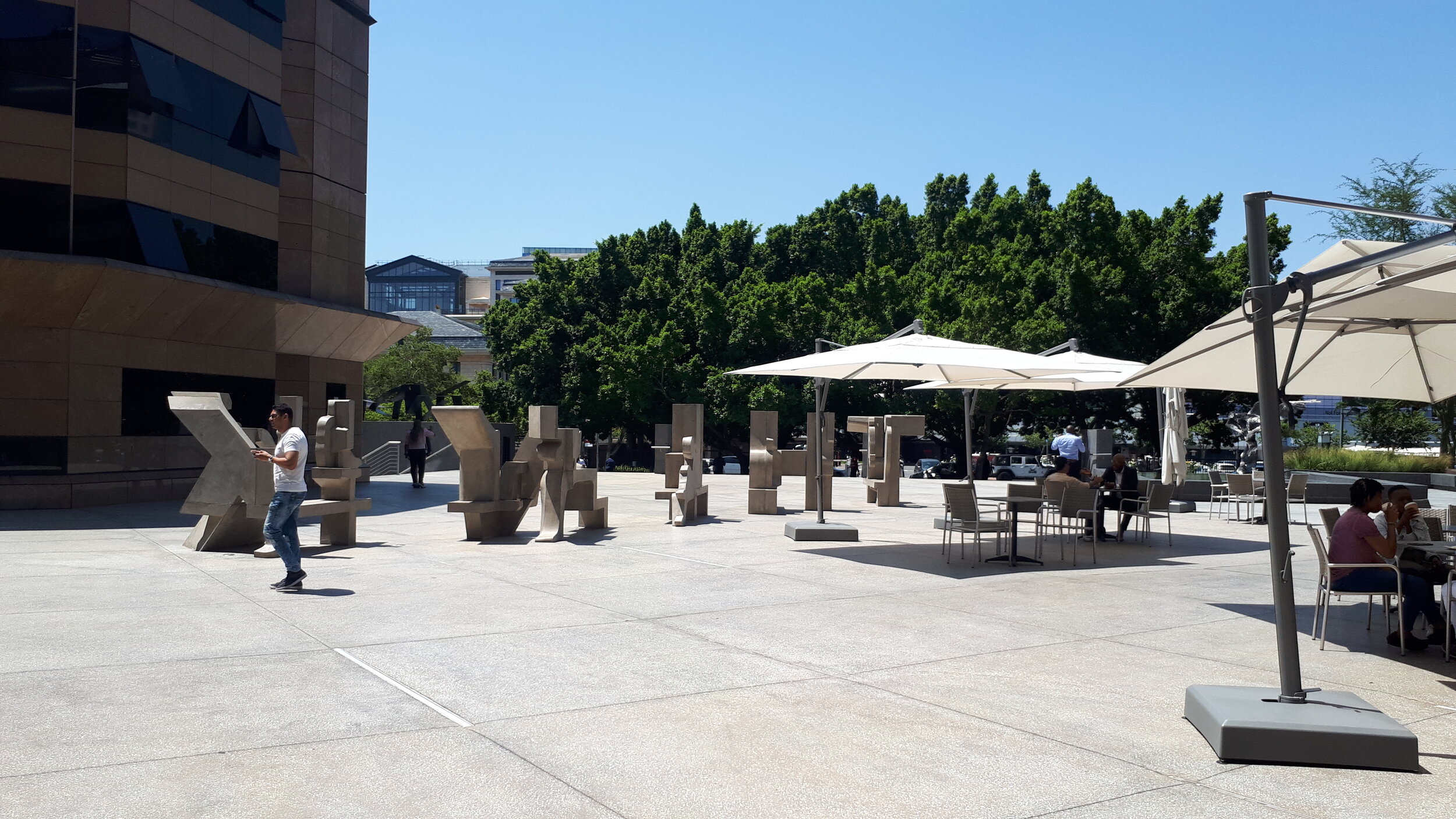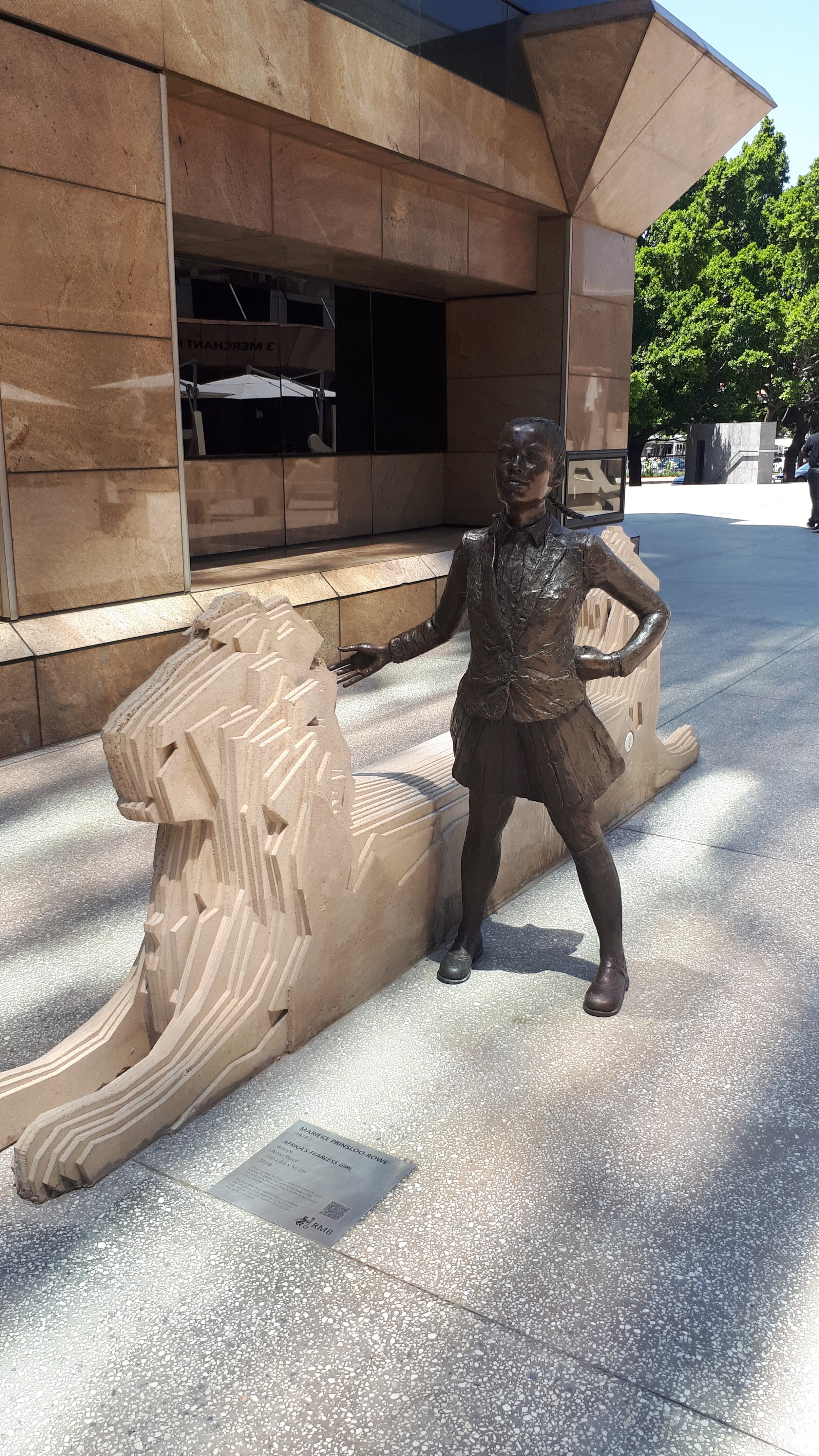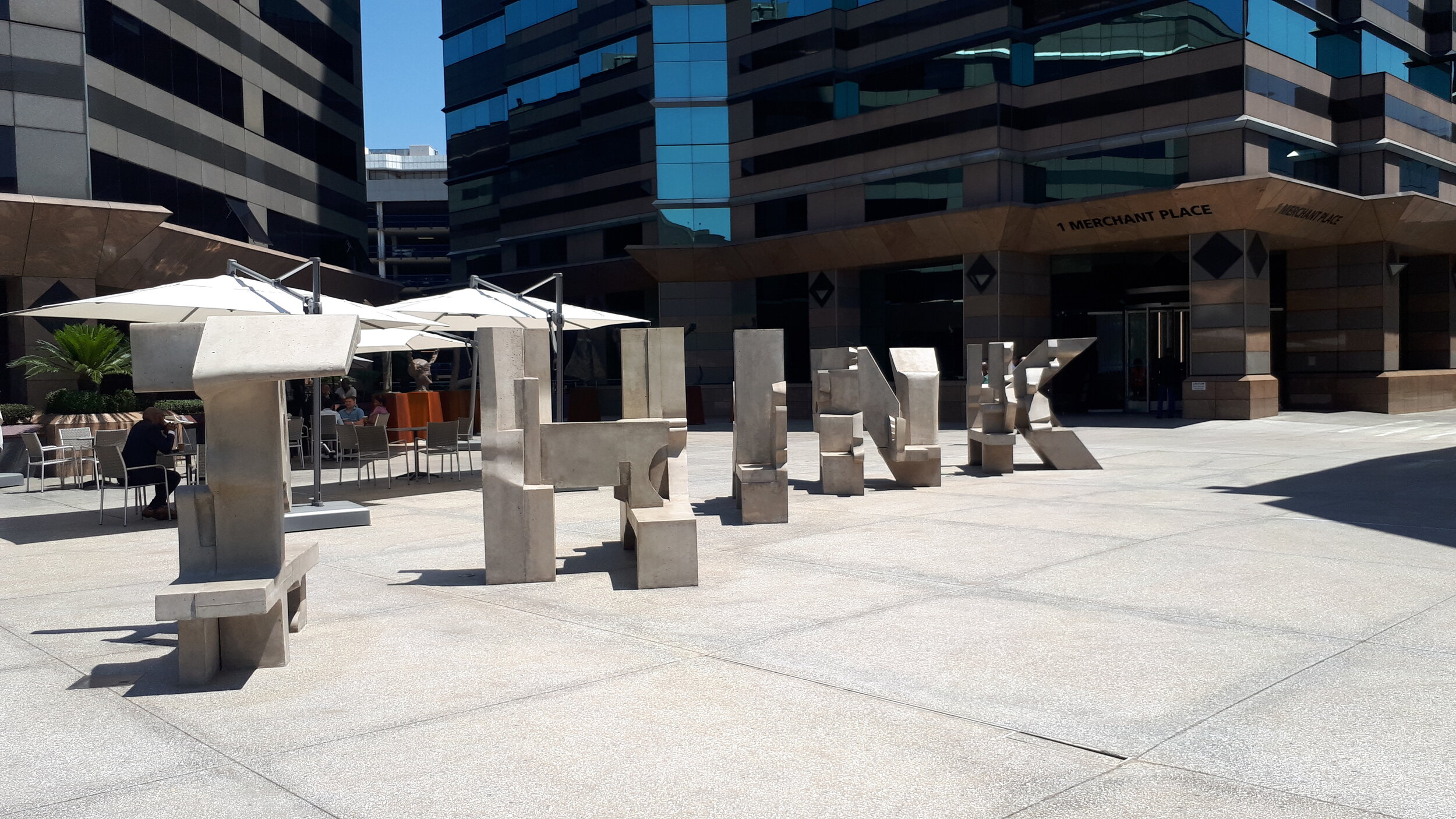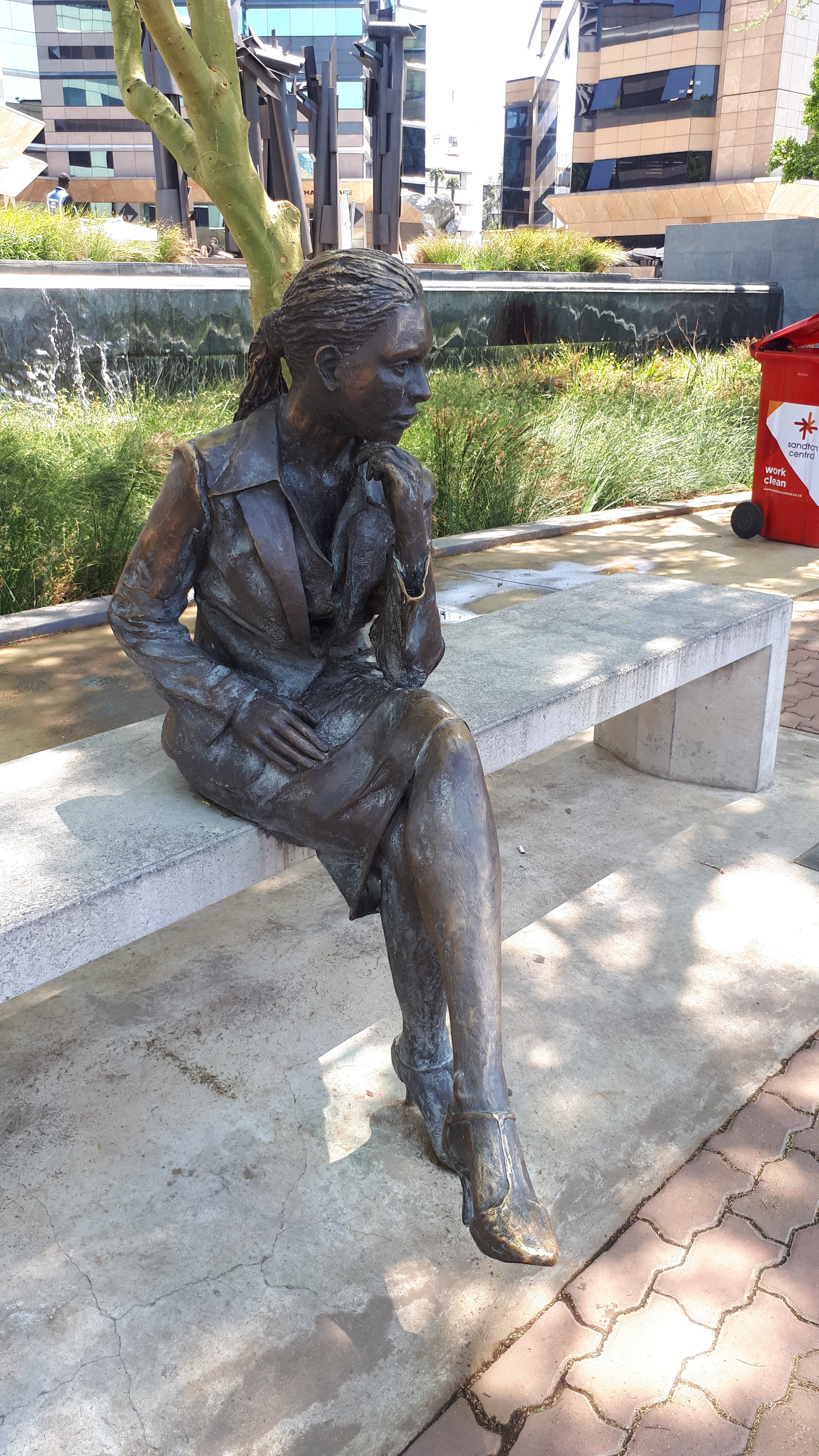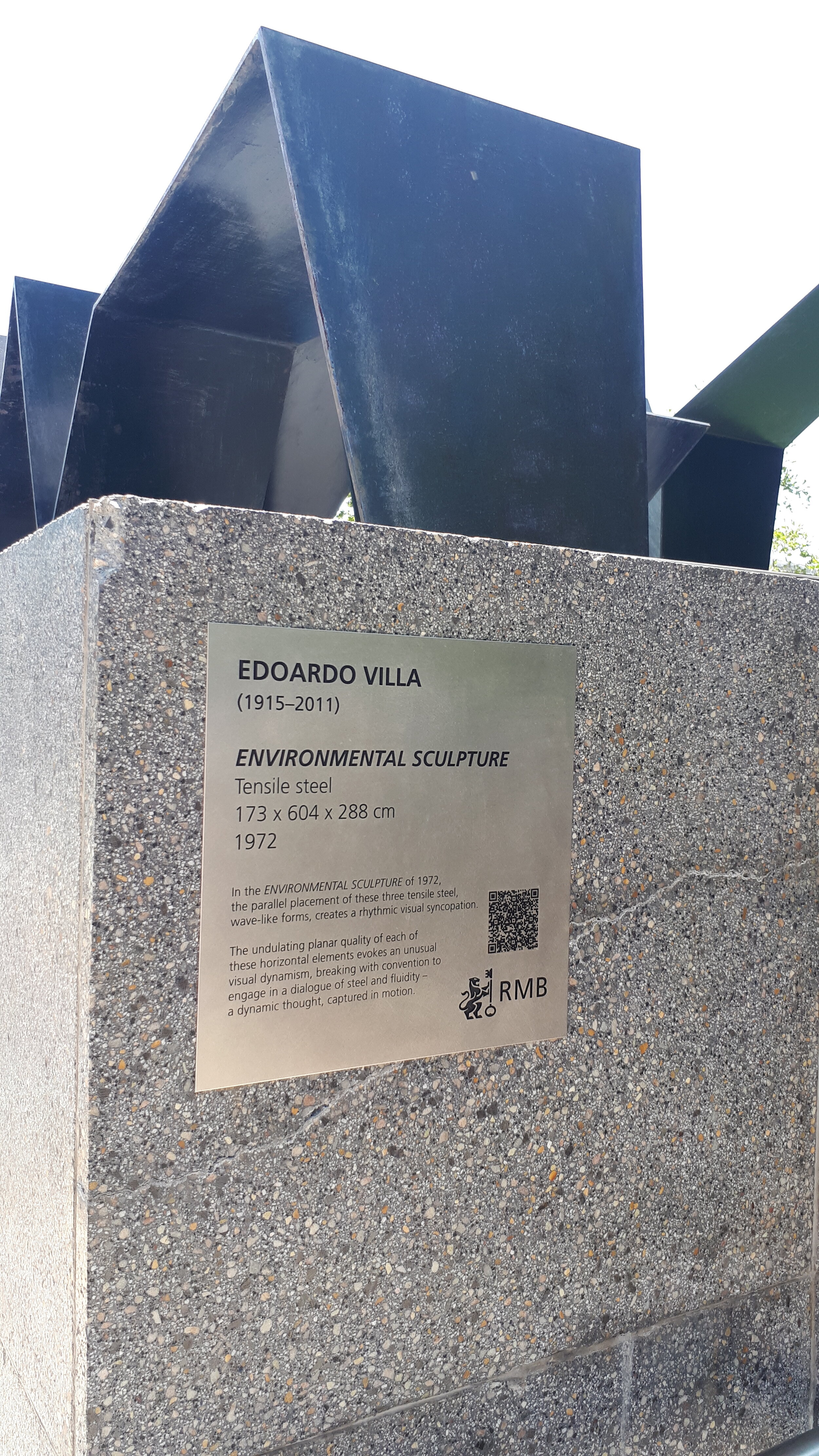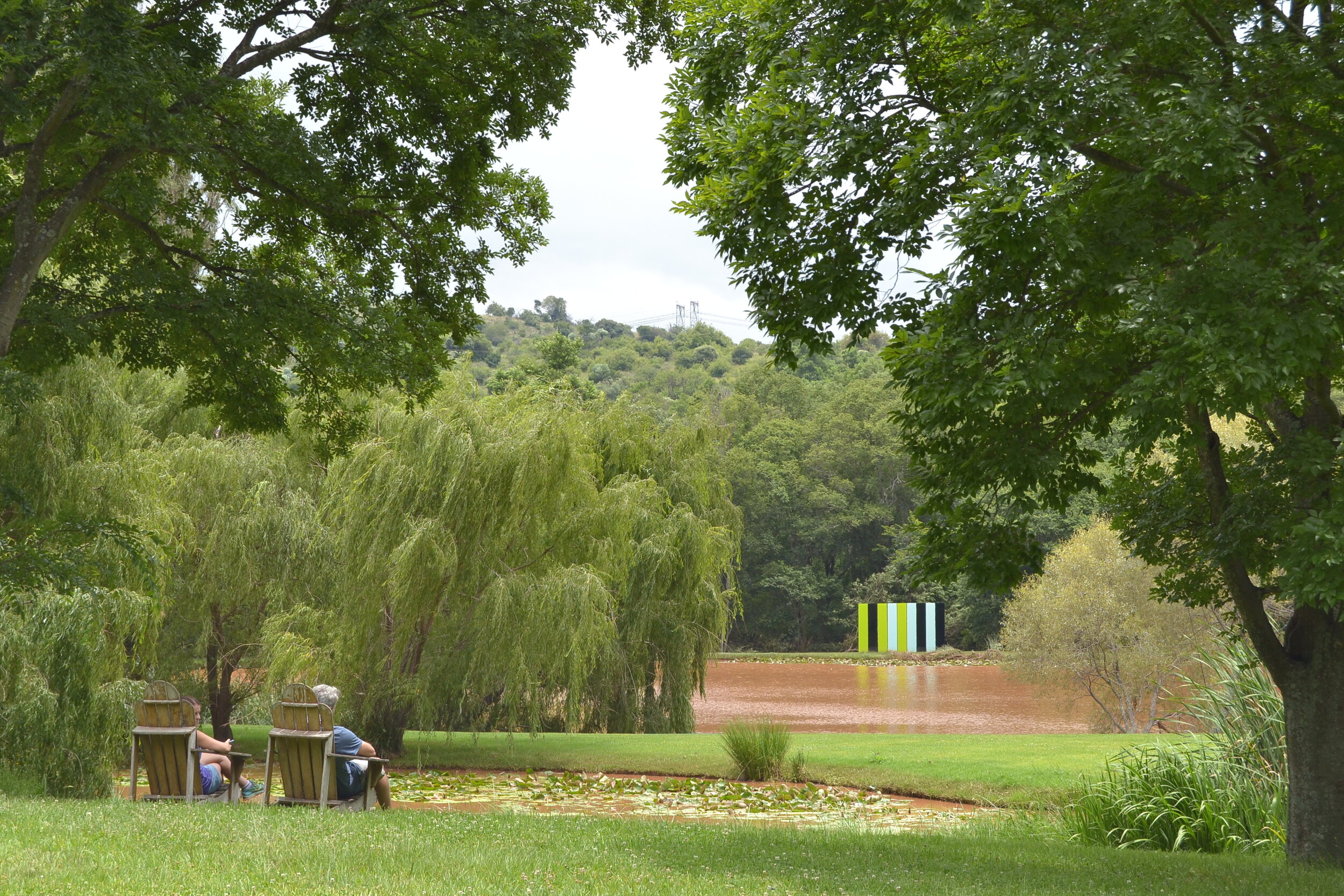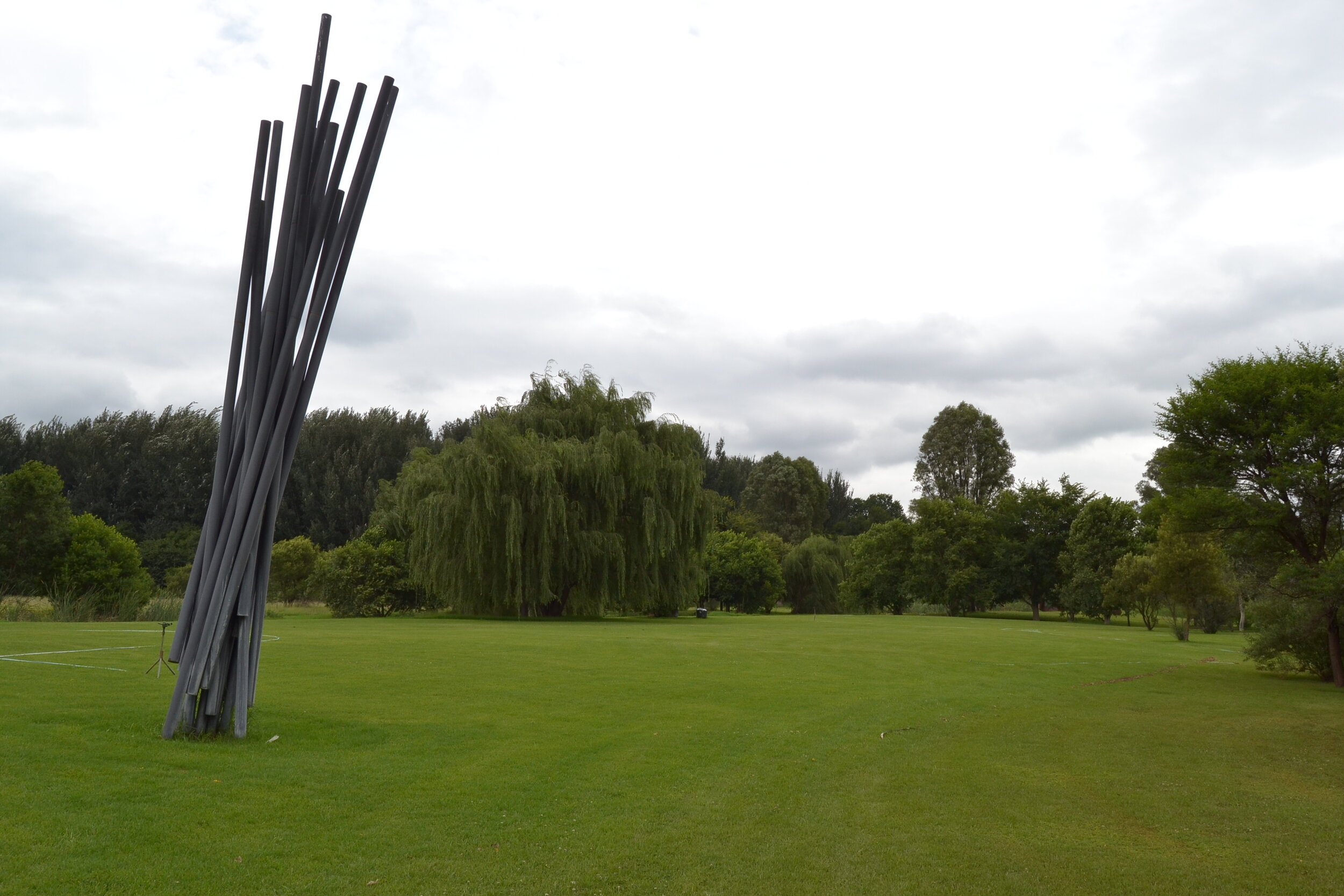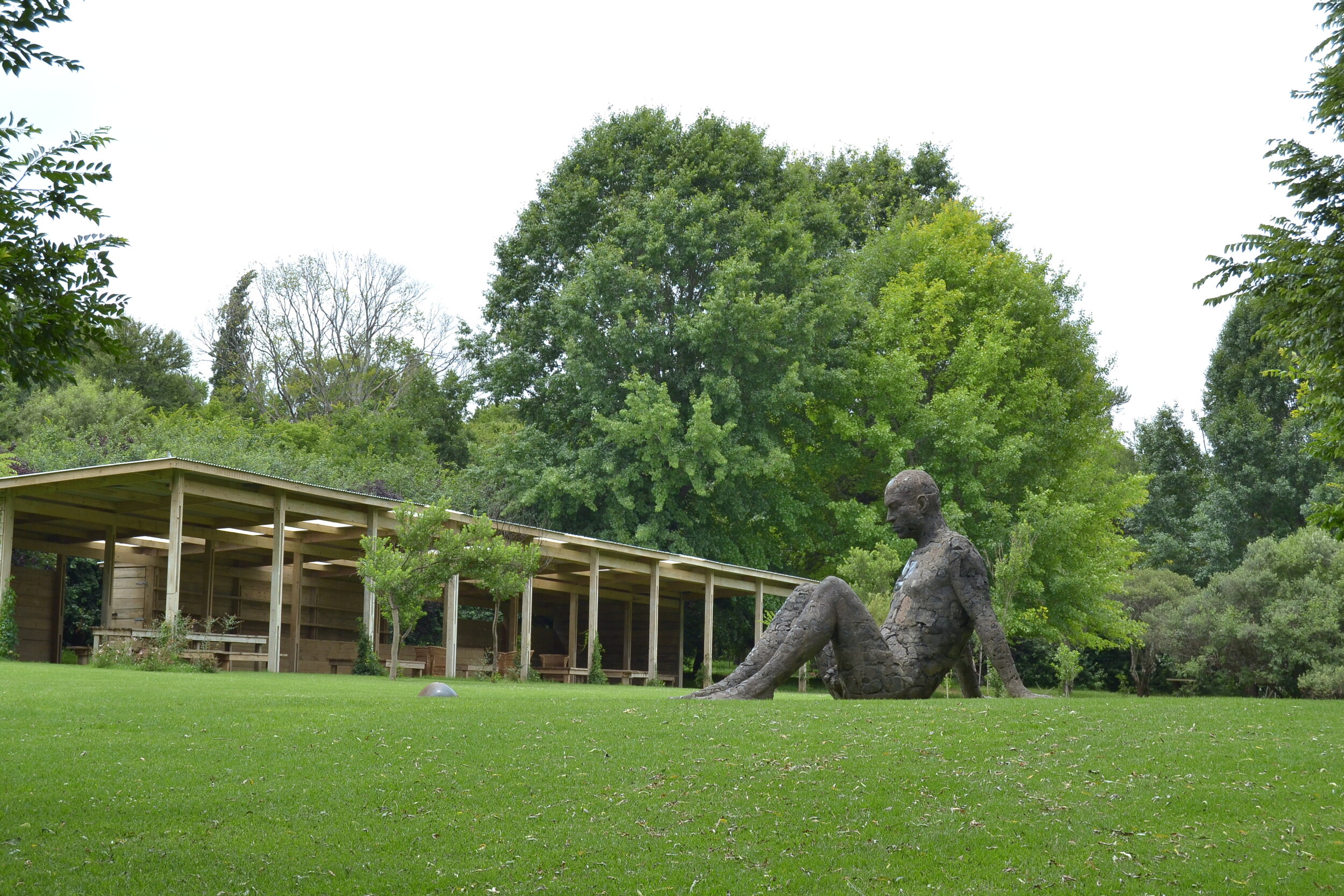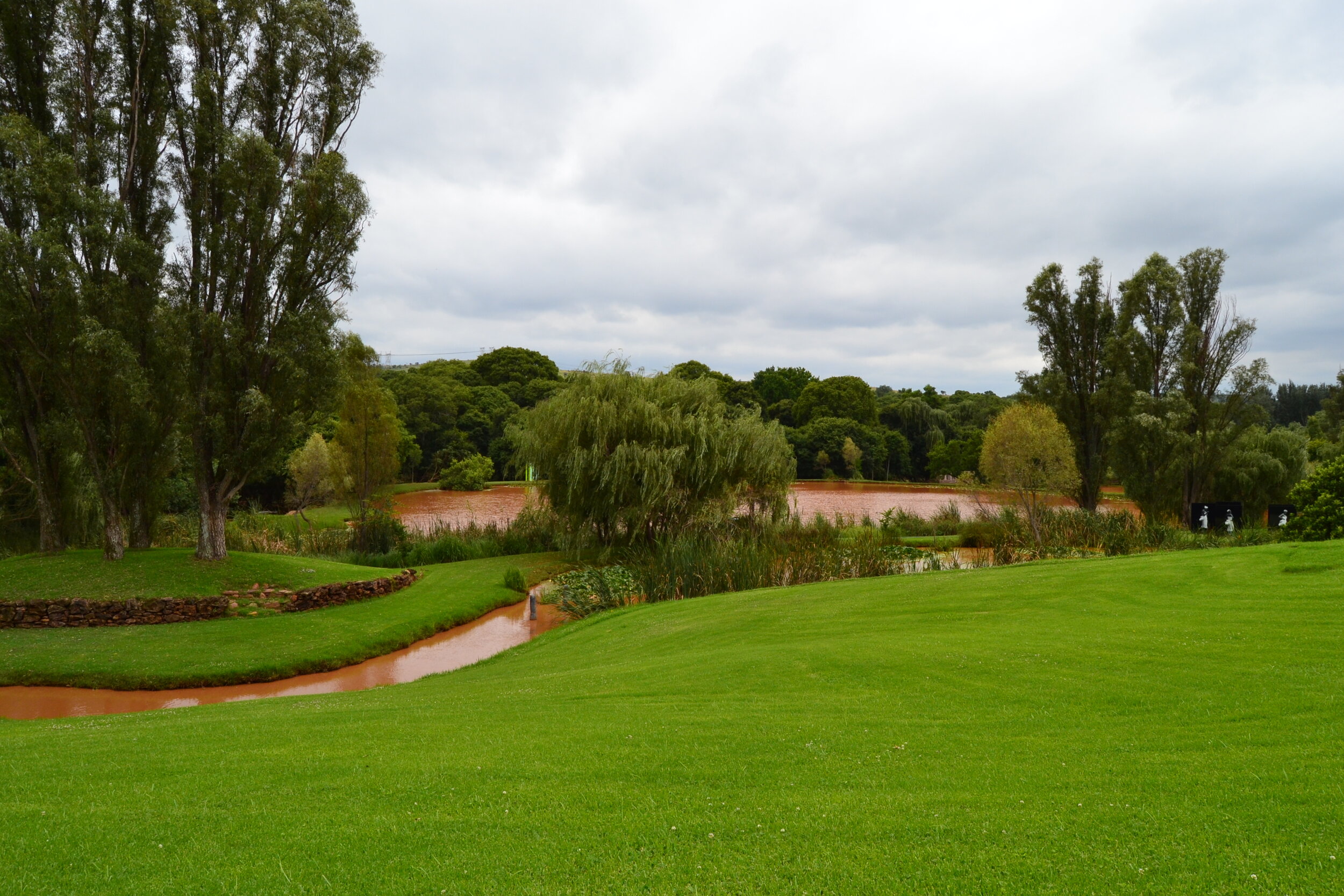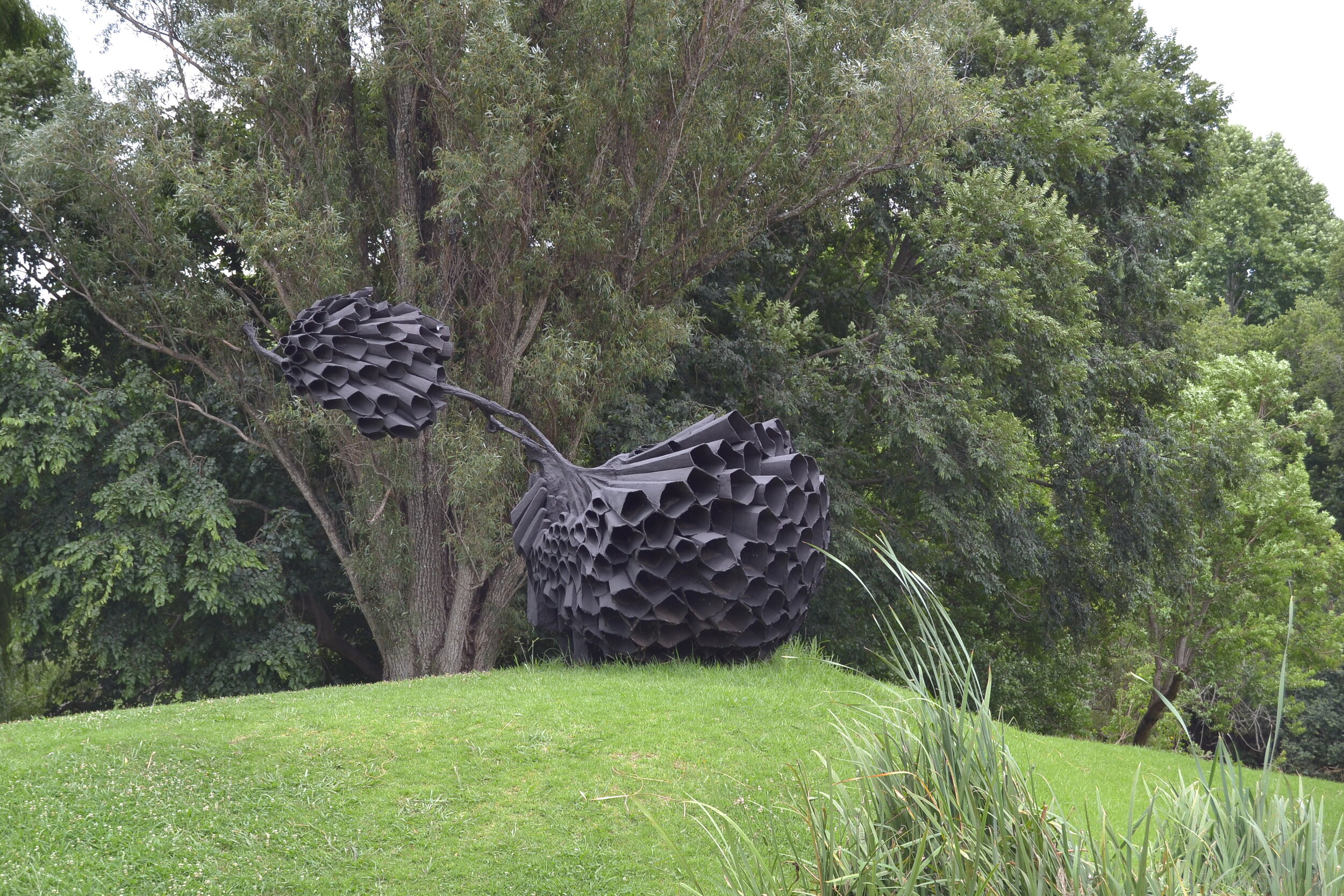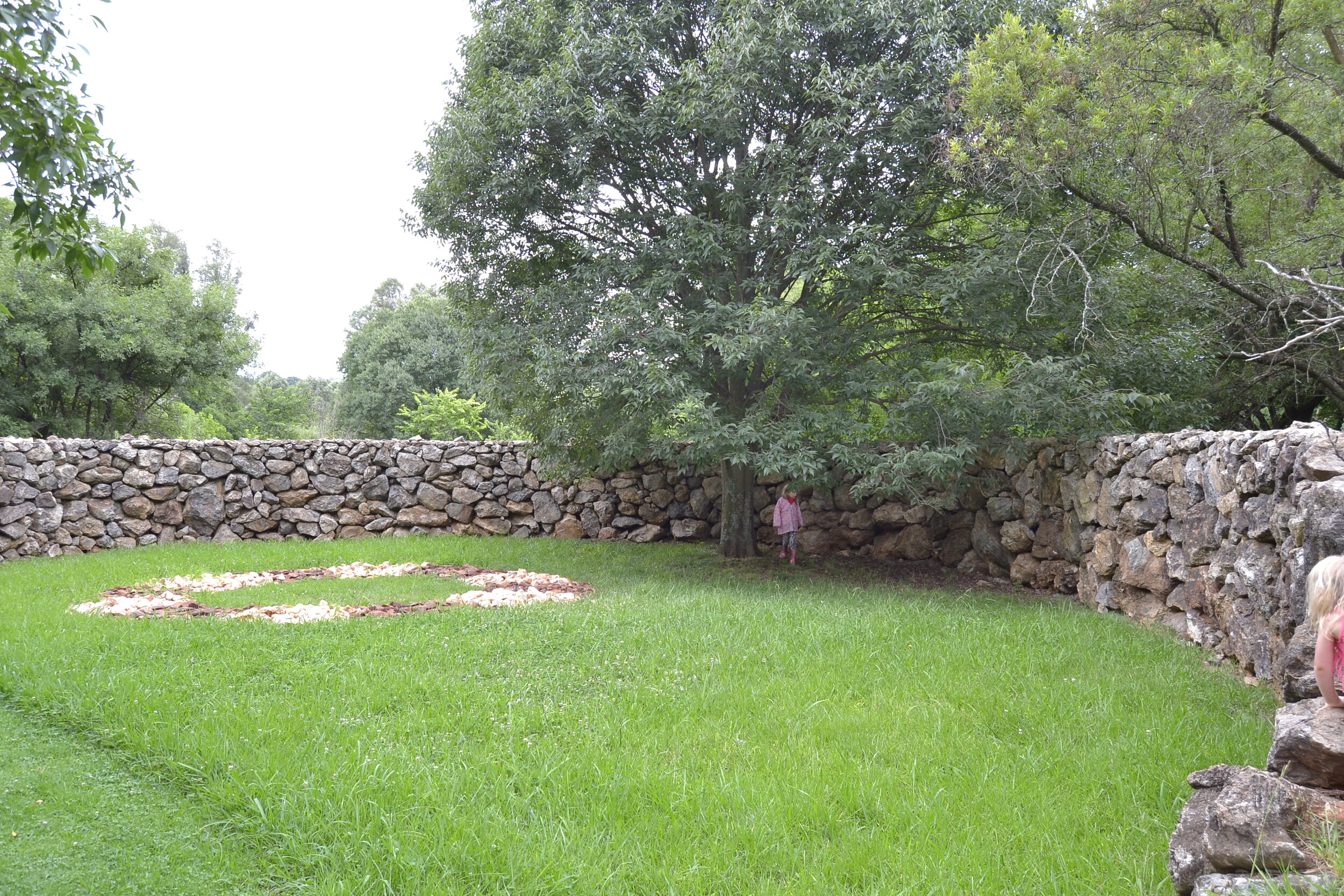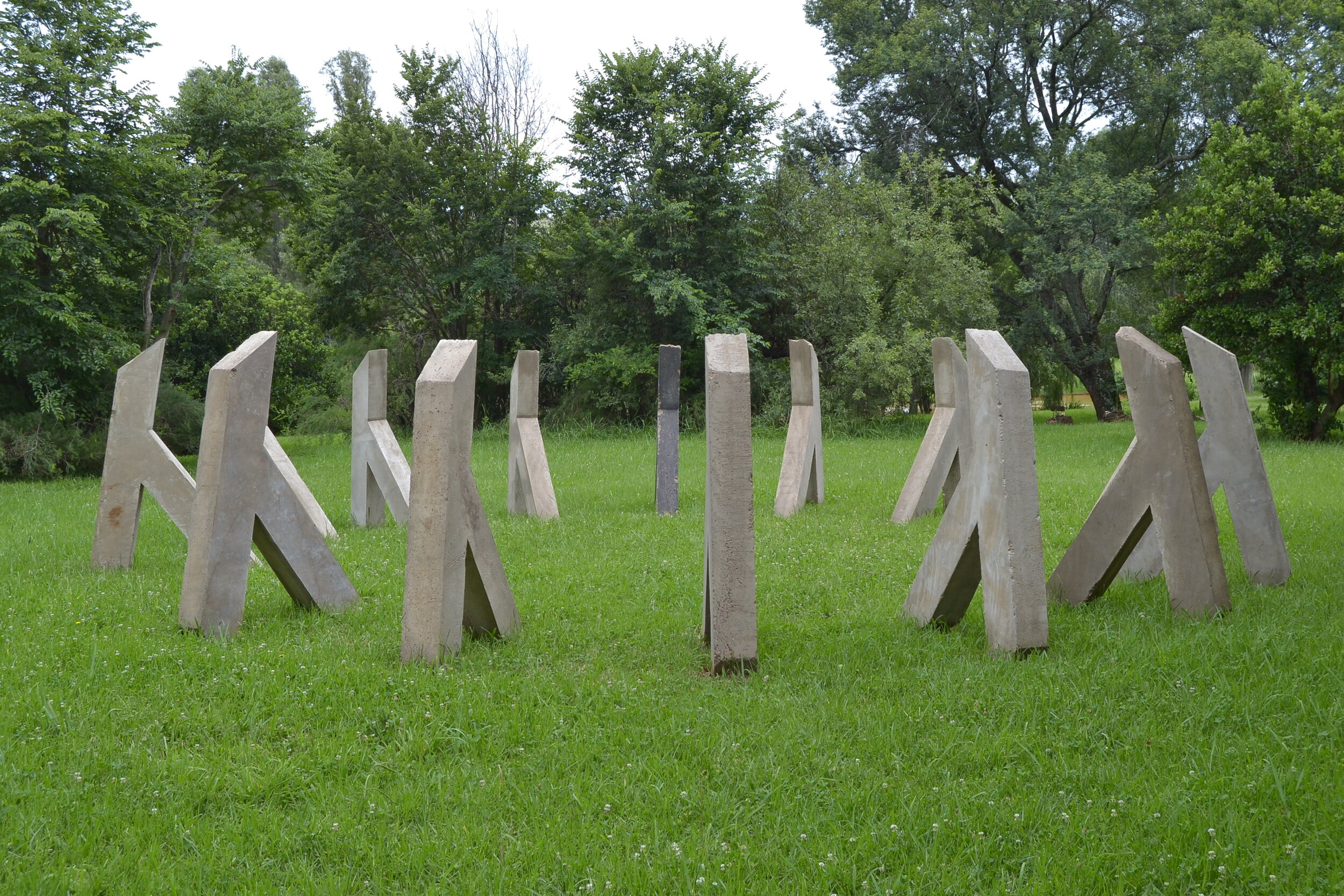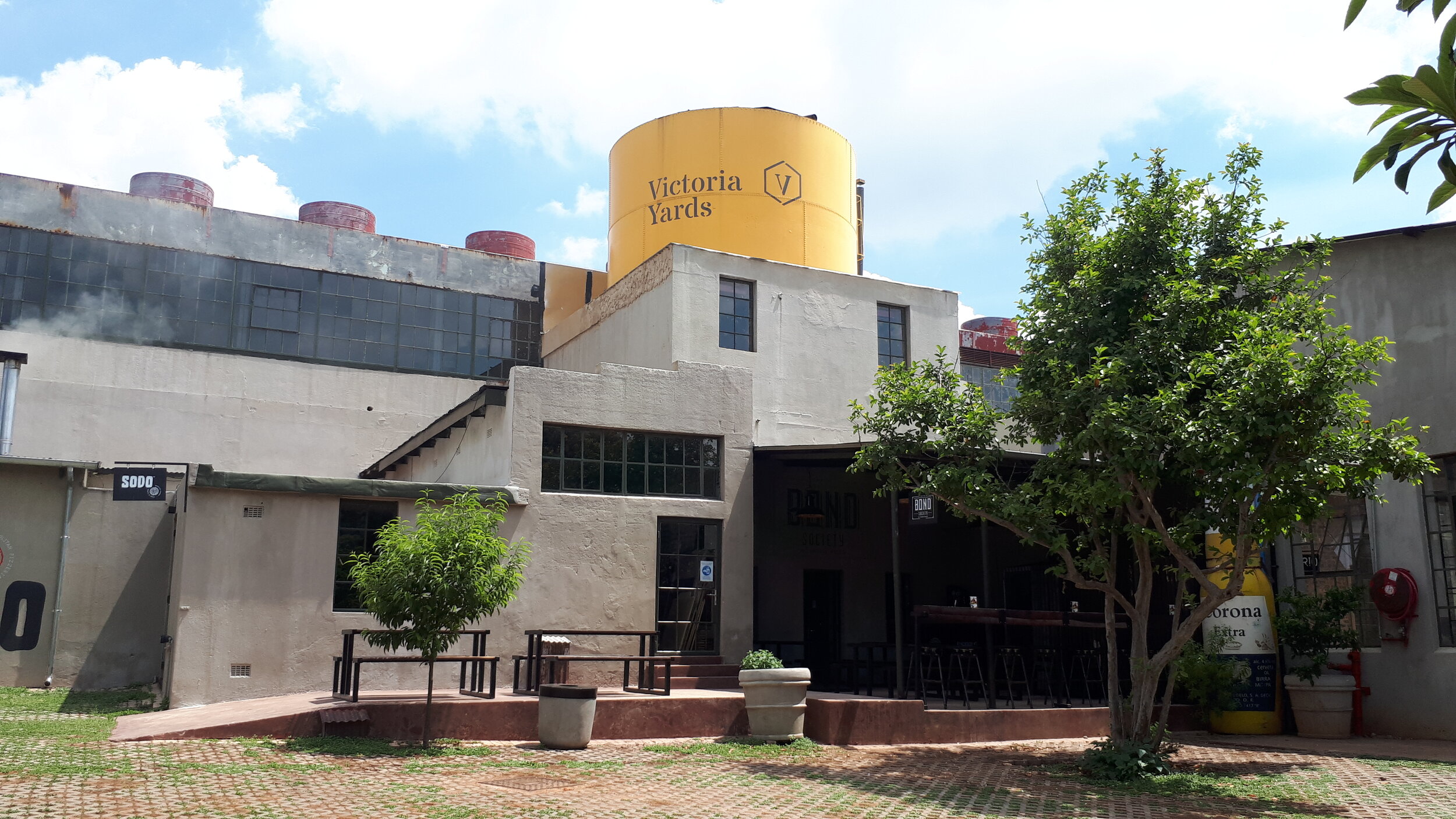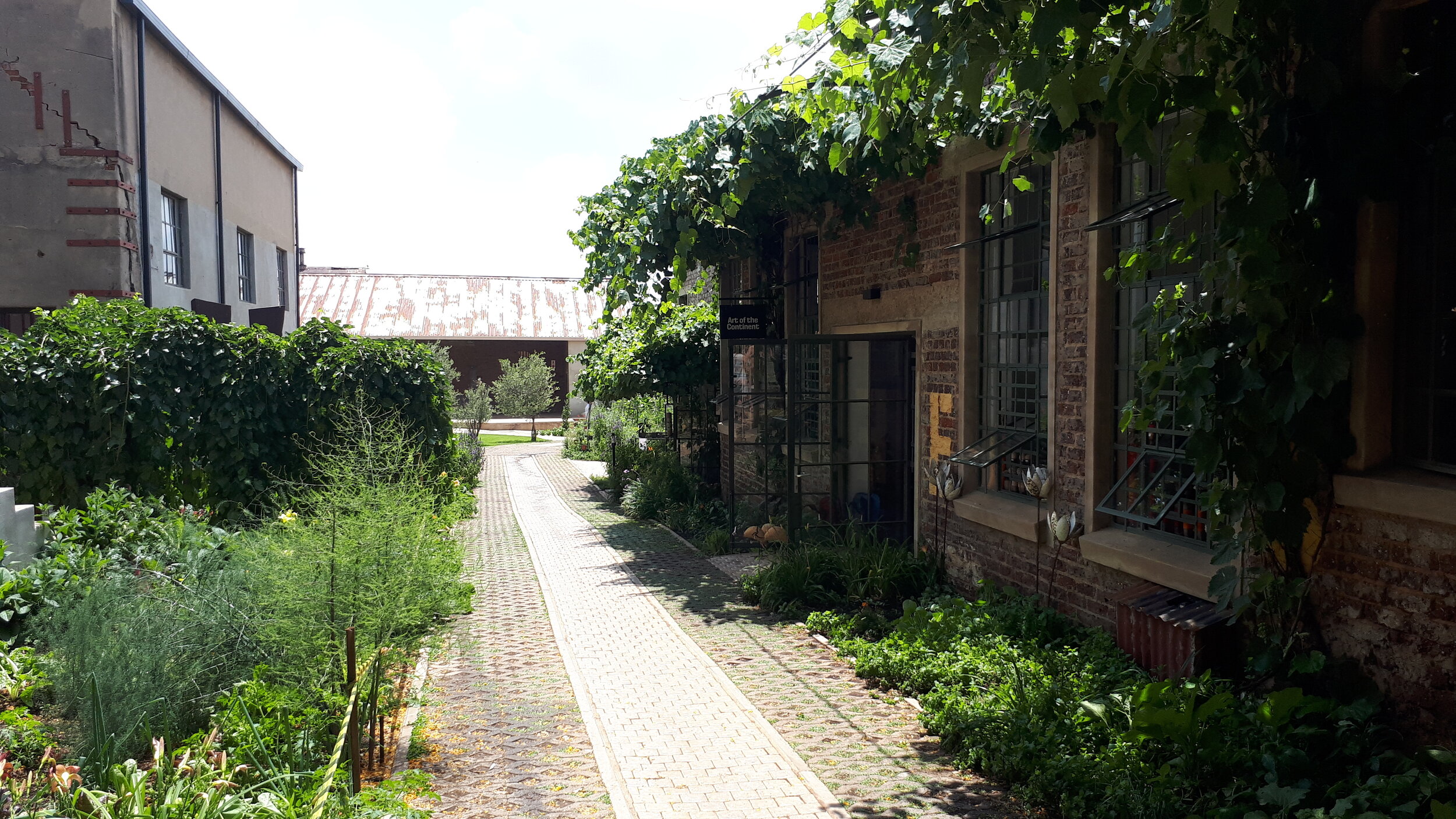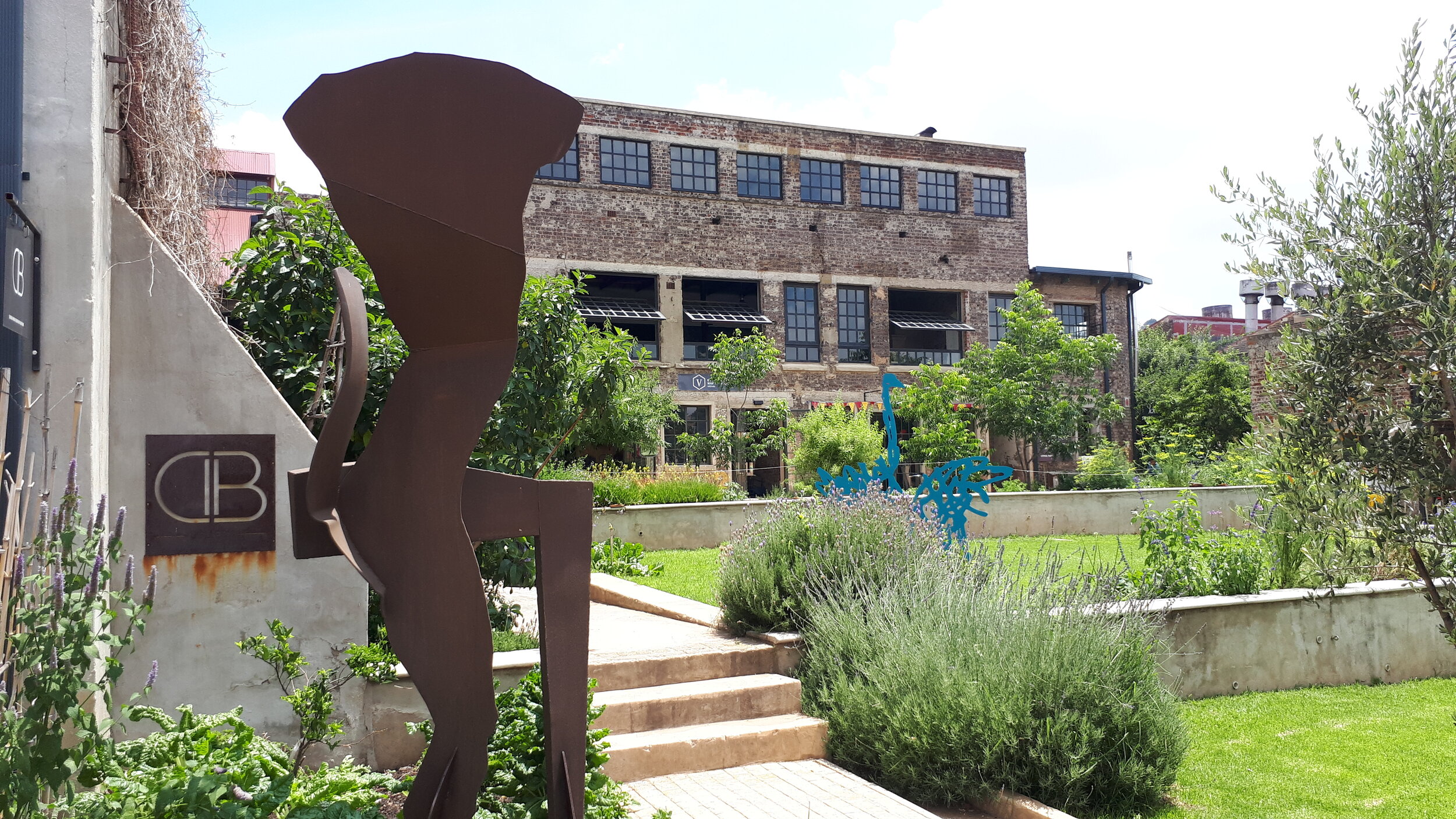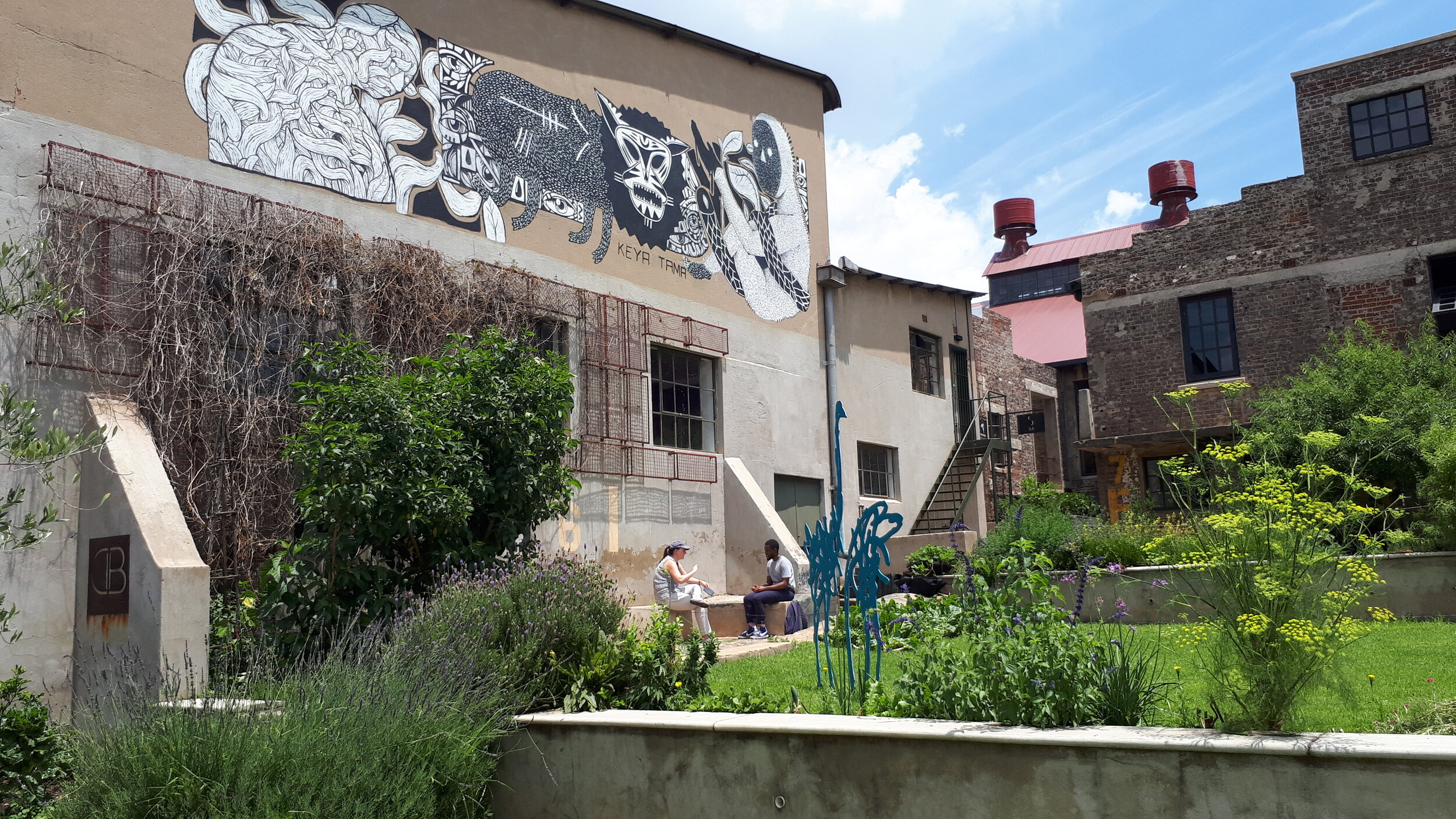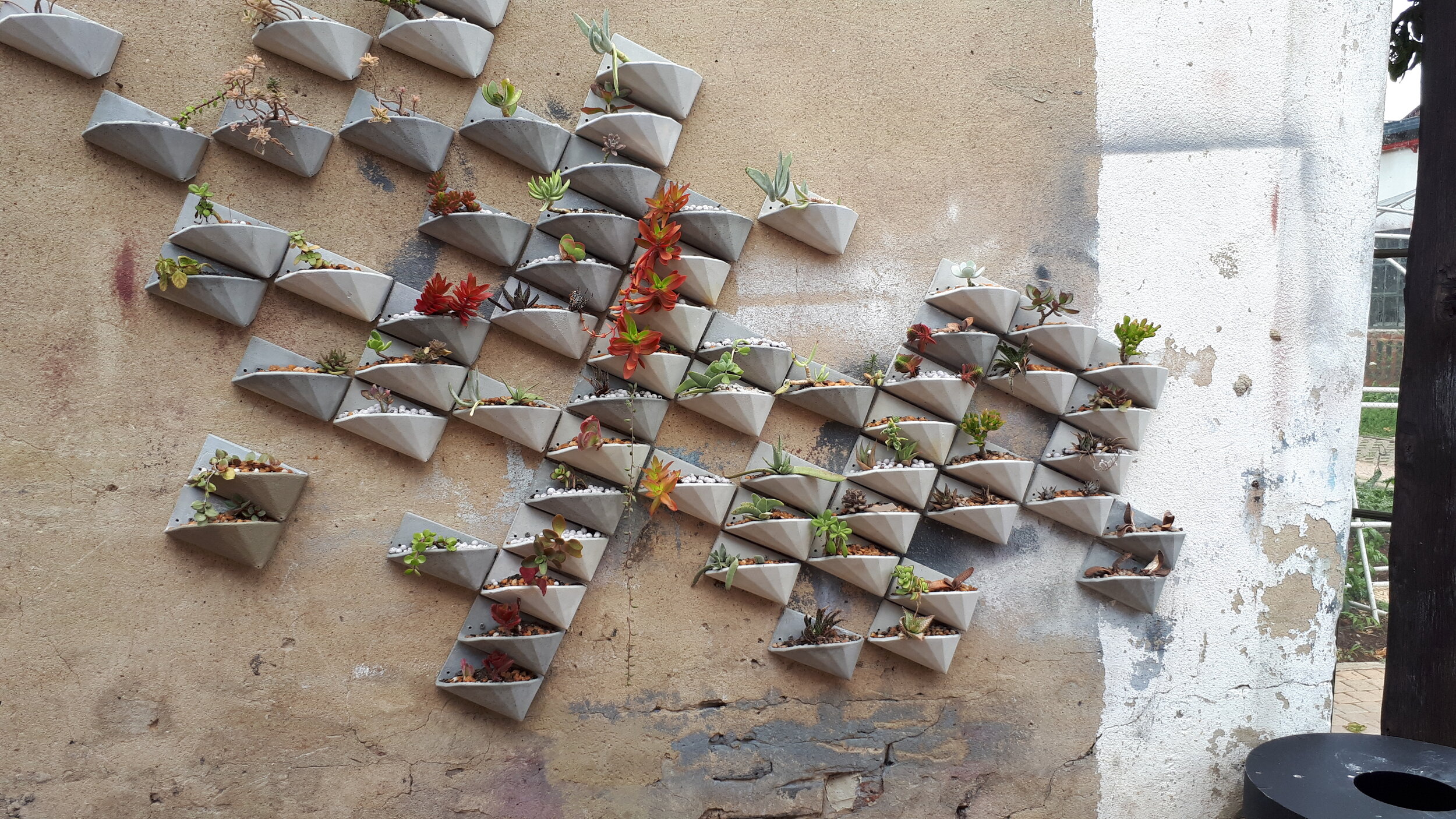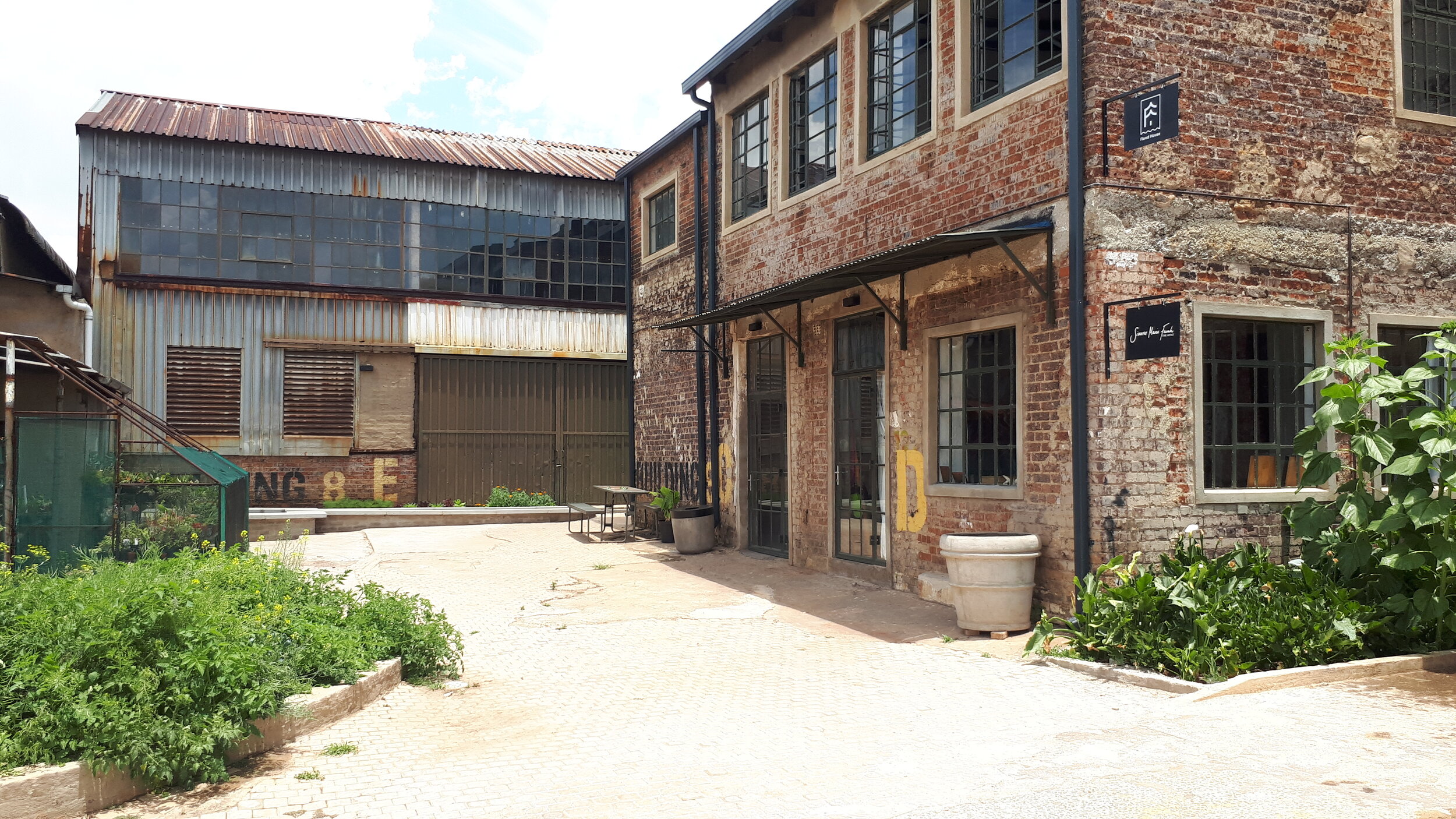The Dylan Lewis Sculpture Park is situated outside Stellenbosch in the Cape and is a remarkable display of artistic genius. The artist uses the landscape to compliment the artworks and create an immersive experience for the visitor. Visits to the Sculpture Park are by appointment only (see contact details below).
About the Artist
Dylan Lewis is an internationally acclaimed South African sculptor, best known for his metal sculptures of large cats. His international career spans two decades and includes exhibitions in Paris, Sydney, Toronto, Houston and San Francisco, as well as numerous one-man exhibitions in London, where he is among the few living artists to have held solo auctions at Christie’s London.The leopard was his primary subject and he spent much time studying them, even dissecting them to further study their anatomy. The sculpture garden displays both his big cat and animal sculptures as well as his more recent work depicting human form and more abstract representations.
About the Garden
Mulberry farm had been Dylan’s studio since 1993 it was in 2009 that is started taking shape into the sculpture garden it is today. He hired an excavator to create a level play area for his children and began shaping the land much like he would begin creating a sculpture. For two years the earth was shaped with earth-moving equipment to create the ponds, hills and depressions that characterize the space. In March 2017 the Dylan Lewis Sculpture Park was officially opened.
The garden is filled with spaces that are each unique and have their own character and mood. Certain spots are intimate and secluded, others expansive. The garden has been intuitively designed to create a sensory experience and every element, from sculpture to boulder, has been placed with great care. The paths were laid out over many years with great attention to detail and every bend, contour and viewpoint has been taken into consideration. The artist has recommended a specific route for visitors to walk (indicated on the map you receive on arrival) in order to pass sculptures in a way that enhances their movement and presents certain views in the sequence he has envisioned.
Planting
The planting is an artwork in itself and the plant palette is used in a way to add beauty to the spaces and define the different areas. Vegetation is predominantly fynbos which is local to the Cape and several species were sourced from Kirstenbosch Botanical Gardens. Retios dominate where the earth has been shaped to create dams and waterways while other areas are covered with area specific planting. An impressive total of 32 Erica species are listed on the plant list while 15 Pelargonium species have also been used. (See Plant List Below)
Fiona Powrie, an indigenous plant consultant oversees the garden botanically has ensured that an almost completely indigenous plant palette is used. The exotic species on site are reminders of a layer of historical planting.
The beauty of this sculpture park is that in every season there will be interest provided, not only by the variety of different indigenous flowering species, but from shape, form, texture, composition, experience, and the impressive backdrop of the mountains and their reflection in the water.
Water
The garden’s four sources of water are a natural perennial spring, a seasonal mountain river, a borehole and agricultural water. These provide water to the different ponds and wetlands as well as the large lake in the centre of the garden. The stepping stones over water are symbolic of the passage into mythical space.
An incredibly beautiful space to visit with nature as the canvas for this artist’s creations.
Contact Details
Dylan Lewis Sculpture Garden: reservations@dylanart.co.za
Tel: +27 (0)21 880 0054
Fax: +27 (0)21 880 0588
Plant Checklist can be obtained from the Sculpture Park





